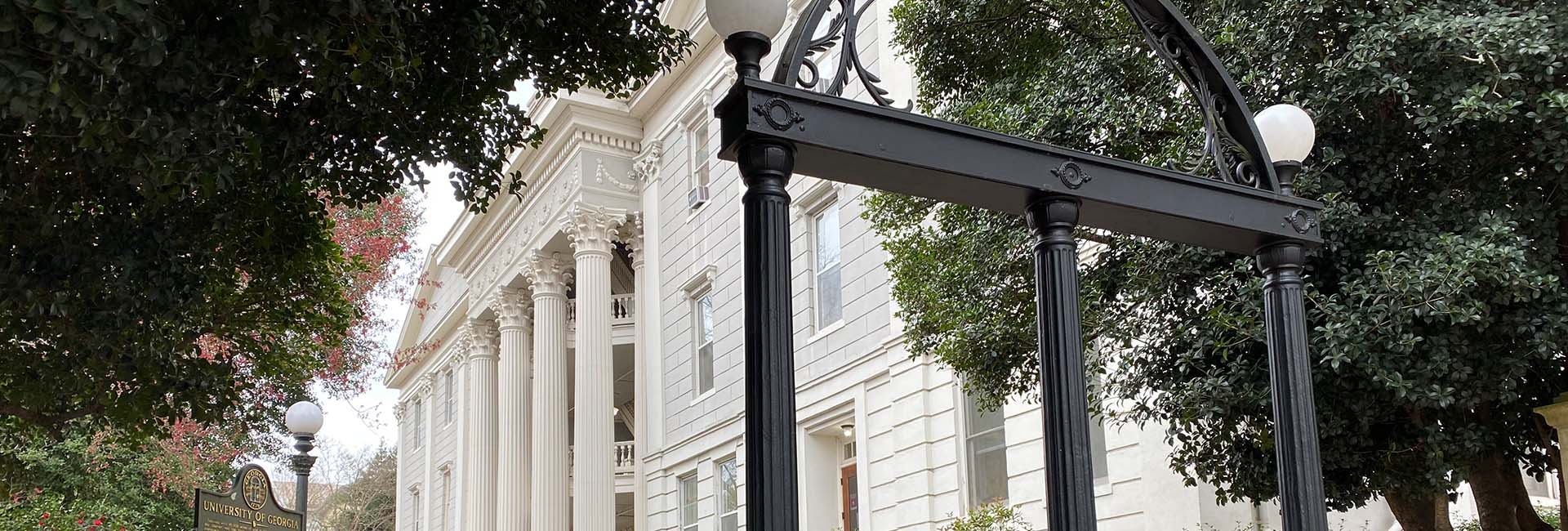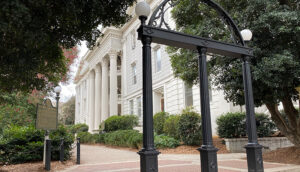The University of Georgia’s Holmes-Hunter Academic Building stands as both a cultural landmark and a symbol of resilience. Led by Ajax Building Company, the renovation of the 39,000sf building not only includes modern upgrades but also safeguards history. Named for Hamilton Holmes and Charlayne Hunter-Gault, the first African American students to enroll at UGA, the building’s renewal mirrors their trailblazing legacy—transforming adversity into progress.

AN INSTITUTE OF INTEGRITY
Once two separate structures, the Holmes-Hunter Academic Building now functions as a unified hub for both student services and academic programs. Inside, offices such as the Registrar, Student Financial Aid, and Institutional Diversity share space with the Center for International Trade and Security and the African Studies Institute. Designed to honor the building’s legacy while ensuring it met the demands of a modern university, the renovations included a fully restored courtyard, integrating new MEP systems, and adding an elevator alongside upgraded staircases and stairwells, bringing the facility into code and full ADA compliance.
SAFETY AND STRATEGY
As with many historic structures, the Holmes-Hunter Academic Building presented significant challenges. First, builder’s risk insurance coverage proved challenging due to the age, historic classification, and original wood structure. Ultimately, coverage was provided by a series of insurers where each value tier was covered by a single carrier up to the full value of the project—a truly unique situation. As for the building itself, termite-damaged framing, an unstable stone foundation, and a misaligned attic structure forced major revisions to the original plan. Ajax implemented a recovery strategy to keep the project on track, including extended work hours, weekend, and holiday shifts, and carefully coordinated overlapping crews.
“From the unforeseen hazards of a historic building to the constant flow of students and staff on campus, our team was prepared, communicated clearly, and took action to ensure the entire process was safe,” says Brock Edwards, Ajax senior superintendent. “This project is a clear testament to the strength of our safety program and culture.”
A QUALITY APPROACH
Quality on the Holmes-Hunter project was not just about finishing clean; it was about doing justice to a building that holds weight in history and design. From the start, the team prioritized craftsmanship as a non-negotiable, notably when the selective demolition process revealed deeper structural issues.
When termite-damaged wood and an unstable stacked stone foundation were uncovered, the team did not patch; they replaced and rebuilt, using steel framing and shotcrete to reinforce the structure without compromising the building’s historic character.
HONORING A LEGACY
Beyond construction techniques, the project had a powerful social and cultural contribution. The building is named after Hamilton Holmes and Charlayne Hunter-Gault, the first African American students admitted to the University of Georgia. Ajax honored that legacy by maximizing diversity in project delivery.
The team conducted four MWDBE outreach workshops during preconstruction and partnered with Artesian Contracting, a certified MBE, as part of the construction management team. In total, 20% MWDBE participation was achieved, totaling over $5 million.
PROJECT DETAILS:
Location: Athens, GA
Size: 39,000sf
Client: Board of Regents of the University System of Georgia
Architect: Perkins & Will; Fitzgerald Collaborative Group
Sector: Education
Completion: 2024
KEEPING HISTORY ALIVE
From an aesthetic perspective, the project went to great lengths to restore and replicate key architectural details from the early 20th century. Heart pine floors, wood wainscoting, and cast-iron columns were salvaged and refinished wherever possible. Where replacements were necessary, period-accurate methods were used, including replication of plaster, stucco, and ironwork to match the 1906 design. These efforts were not just cosmetic; there were structural and spatial decisions made to ensure consistency in form and experience.
The work also uncovered a long-covered mural during the demolition process. Rather than conceal it, conservators stabilized and restored the piece, integrating heritage and visual storytelling back into the building.
The renovation created a building that functions as well as it looks. It delivers accessibility, safety, and comfort while preserving and celebrating its layered history. The space is once again able to serve its academic and administrative roles, without losing its soul.
“When you walk through Holmes-Hunter now, you feel both the history and the future of this campus,” says Edwards. “It’s a building that remembers
where it came from, but it’s also ready to serve generations of students still to come.”
